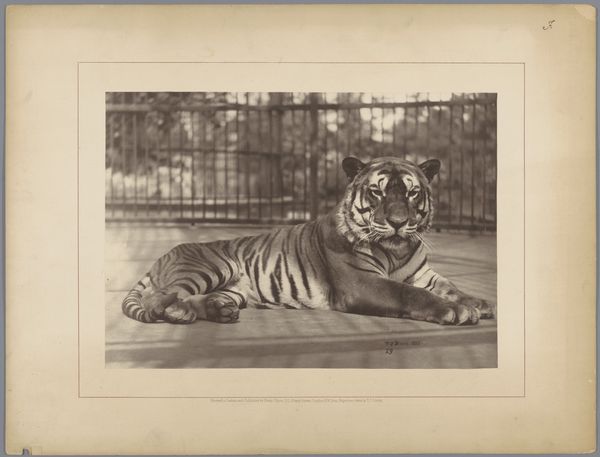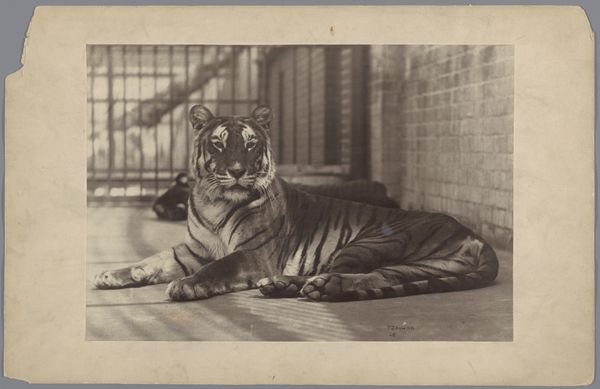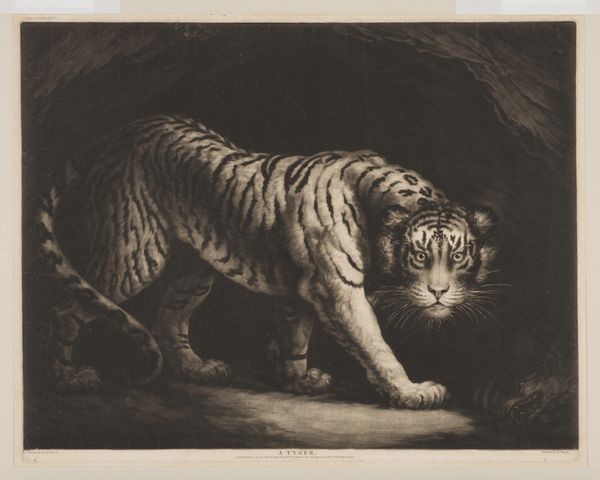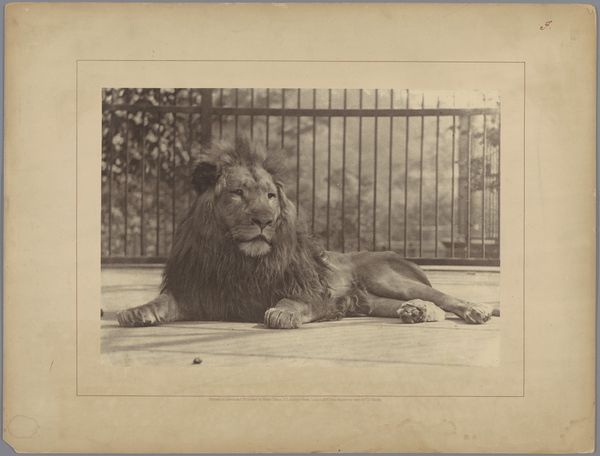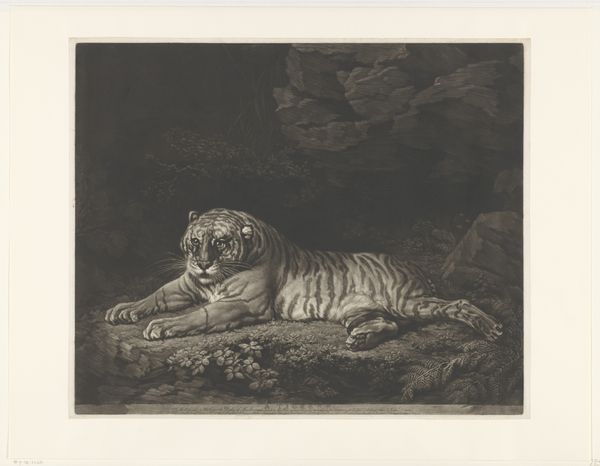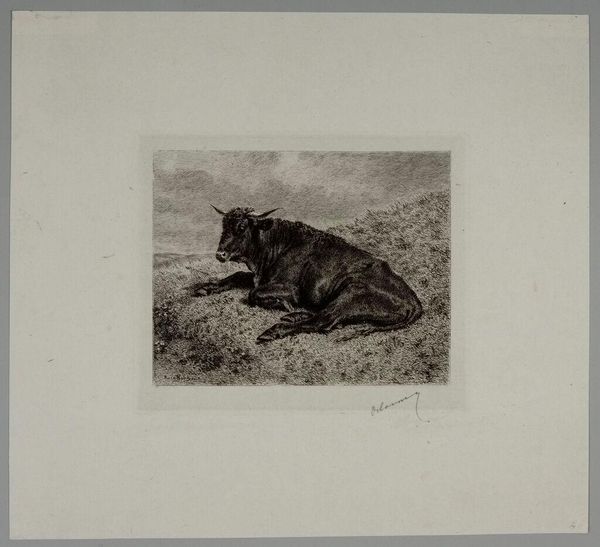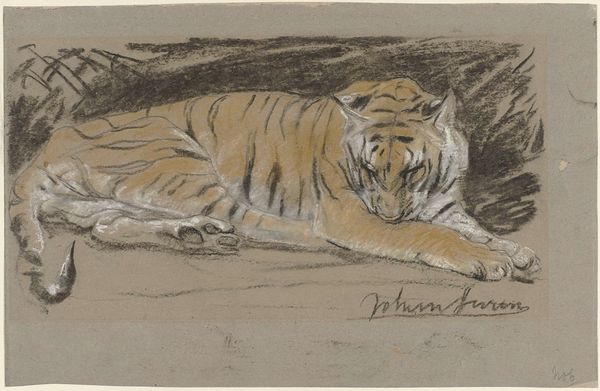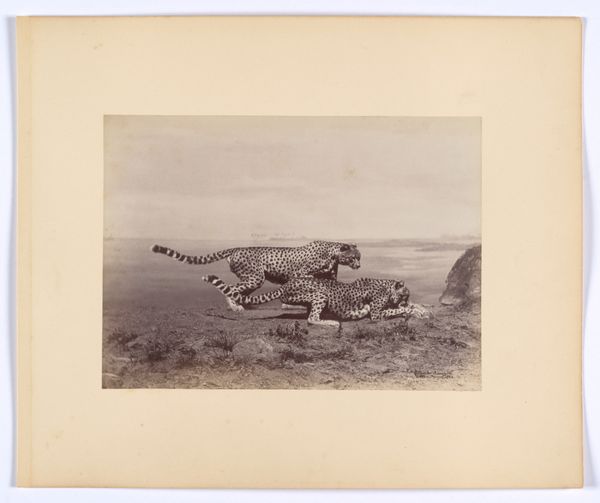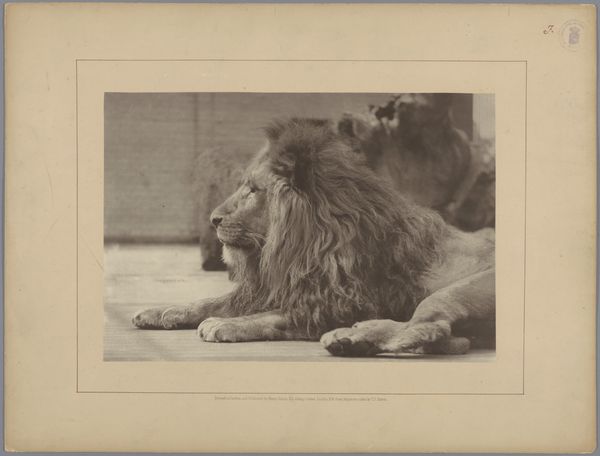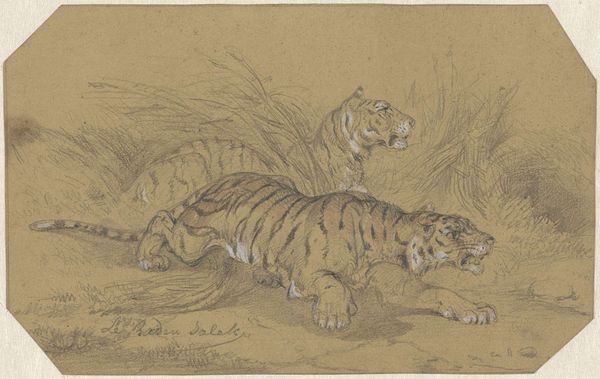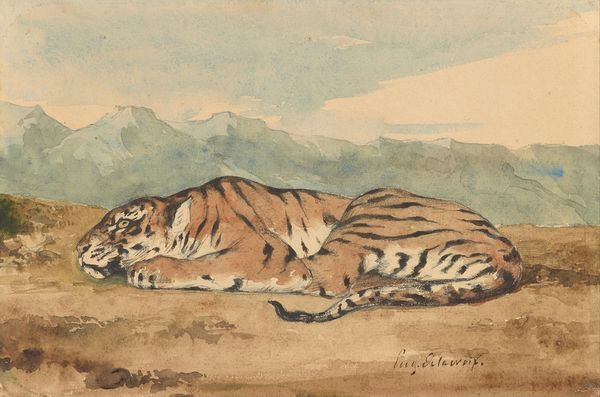
photography, gelatin-silver-print
#
animal
#
landscape
#
photography
#
orientalism
#
gelatin-silver-print
#
realism
Dimensions: height 265 mm, width 355 mm
Copyright: Rijks Museum: Open Domain
Editor: Here we have "Gedode Bengaalse tijger in Boeloeh-Tjina, Sumatra," a photograph, specifically a gelatin-silver print, taken around 1890 to 1900 by Heinrich Ernst & Co. The image shows a dead Bengal tiger lying on the ground. It's… haunting. I'm struck by the stillness, the finality of it. What visual symbols or historical contexts are present that might offer additional insights? Curator: Notice first the very act of photographing. What does it mean to create an image of death, particularly of an animal revered and feared? Think of the tiger itself as a powerful symbol of untamed nature, a representation of both beauty and danger, and an idea of orientalism, reflecting colonial attitudes toward the East, reduced to a static object. Do you perceive anything meaningful through its posture? Editor: Its limpness, the way its body is sprawled… it’s devoid of all the tiger's usual energy. The presence of the board under its neck adds a strange element too – a sense of staging? It robs the tiger of the dignity or power usually associated with it. Curator: Indeed. The placement and the lighting direct our gaze but also, more significantly, perhaps create a visual trophy, documenting the hunter's triumph, where dominance over nature—a key ideological component of the time period—is displayed and imprinted onto cultural memory. Consider its implications, what sort of narrative does the photograph endorse and who gets to tell it? Editor: That’s a stark way to put it. So, the photograph isn't just a record but also a deliberate statement about power and control? Curator: Precisely. Visual artifacts are rarely neutral. They embody cultural assumptions and shape how we understand the world around us, particularly regarding man's relation with nature, life and death. Editor: I hadn’t considered the power dynamics so explicitly. This has changed how I see photographs, how symbols construct meaning and justify actions. Curator: Exactly, and that is where art can transform perceptions and teach us.
Comments
No comments
Be the first to comment and join the conversation on the ultimate creative platform.
